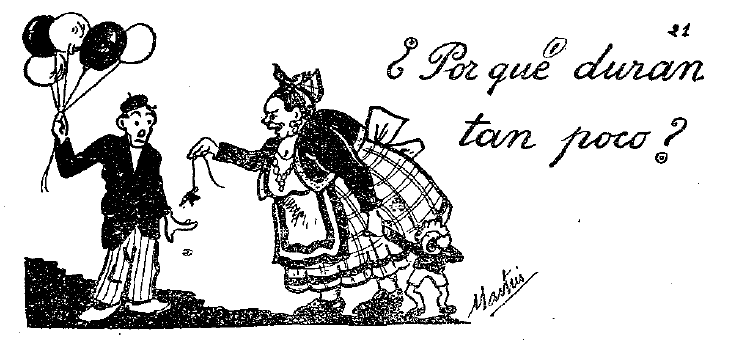
| Языки :: Испанский |
| Аудио |

 |
|
 |
|
59 |
Español |
| Lección Veintiuna (21) | |
| REVISION AND NOTES | |
| 1 Soy, estoy. - There are 2 verbs to be in Spanish. As a rule, I am, he is are soy, es, if the quality or state is inherent and durable, and estoy, está, if the quality or state is fortuitous, or if it is a question of place (i. e when to be can be replaced by to lie, or stand). Ex. : Soy un hombre, I am a man; estoy contento, I am glad. - Madrid está en el centre de España : M. is in the centre of Spain. But there are shades of meaning and particular cases that we shall study as we find them. Note the accent on está, distinguishing it from esta, this (fem.). Esta señora está triste. The infinitive of soy, es, is ser; that of estoy, está, is estar. In estoy, the stress is on the final syllable, -toy ; as regards the rule of stressing (less. 7, par. 2), the final y is considered like a consonant. |
|
| 2 This, these; that, those. -- Este señor, esta señora, this gentlemen, this lady; estos señores, estas señoras : these gentlemen, these ladies. - Esto : this (pronoun) ; eso (pron. esso) : that (pron.) - Ese señor, esa señora : that gentleman, that lady; esos señores, esas señoras : those gentlemen, those ladies (Remember that s remains hard between two vowels). |
|
|
3 For is para when implying purpose or destination : Tengo dinero para comprar una maleta : I have money to buy [for buying] a suitcase. He comprado este libro para usted : I have bought this book for you. But : Estoy aquí por unos meses (maycess) : I am here for a few months. - Yo contestaré por usted : I shall answer for you. - Vengo a España por primera vez : I come to Spain for the first time. ¿Por qué? : Why (for what cause) ? - ¿Para qué? : What for (for what purpose) ? Por and para, like ser and estar are difficult to use in the beginning; we could give you quite a lot of rules, with their exceptions; but, says Don Gormas to Don Diego, " living examples are much more telling ". We shall comment upon these examples when we come across them. |
|
| 4 Imperative. - Tomar, to take. Usted toma or toma usted or simply Toma : you take. - Tome usted or Tome : take - So : Mirar, to look. Usted mira or mira : you look. Mire usted or mire : look. So, with verbs ending in -ar, the final a of the present indicative changes into e. - For the other verbs, whose present indicative, is in e, it's the contrary and the e is changed into a : Leer, to read. Usted lee, you read. Lea usted or lea : read!. |
|
| 5 Pronunciation. - Let us recall that all the vowels
are sounded, that e is never mute. C before e and i is sounded like hard th in think. Ch as in English (tch). The g before e and i, and the j in all cases have the guttural sound of a suddenly breathed out h, like the guttural German Ch. H is always mute. LL has an intermediate sound between (mi-)llion and (cra-) yon. The ñ is sounded as gn in reign, sign., etc., whereas in gn, the g remains hard, as in ignore, signify, etc... The s is always hard, ss, or -ce. So there is no need to double it in words which resemble the English ones. Thus : Posesión, possession. - Asesino, assassin. The v, though pronounced v theoretically, is in practice a b, weakly articulated by bringing the lips close together, without joining them. A Spanish ear does not distinguish the v from the b. The u is sounded oo; it is mute in gue, gui but pronounced in gua, guo (gwa, gwo). It is mute in que, qui. There is no qua, or quo, q being then replaced by a c ; cuatro (Kwattro) : four; cuota (Kwota) : quota. The x between two vowels is sounded kss : examen (eksamain). Before a consonant it is practically ss : explicar (esspleecar) , to explain; explanada (essplannada), an esplanade. The z is always the sound of c in ce or ci, i. e. hard th (think). The English sound z does not exist. The final d and t are hardly heard, or not heard at all : usted, Madrid. In diphthongs, the three strong vowels (a, o, e) dominate, unless an accent marks the contrary. If the diphthong has only weak vowels (i, u, y) it is the last which dominates, unless there is a corrective accent. The strong vowels (a, o, e) never unite into a diphthong ; when there are two together, they make 2 syllables the second dominating. We shall speak again in the Notes about the shades of pronunciation. |
|
|
6 The present participle is combined with estar into
the progressive form. |
